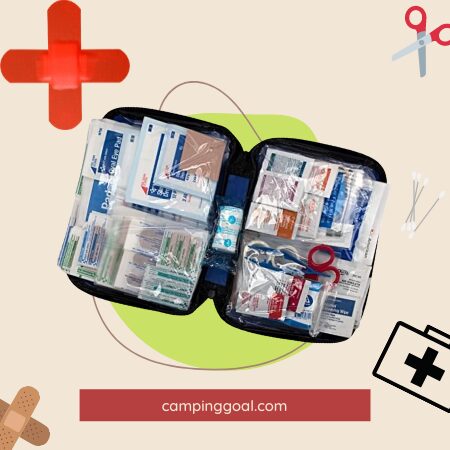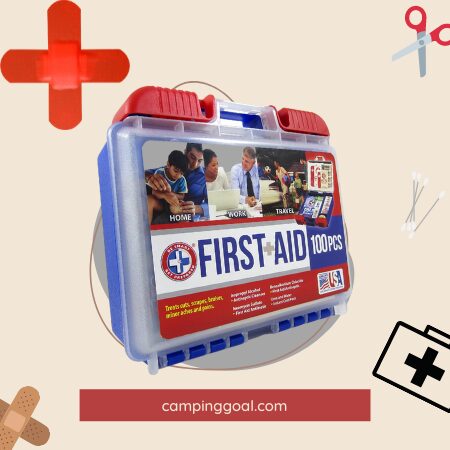As we know that accidents are unpredictable and can happen anywhere, anytime to anyone, you can simply consider these as an uninvited guest. Unfortunately, if accidents happened, you need to be ready to deal with that.
However, nowadays, in the modern world, you can deal with minor injuries such as cuts, burns, abrasions all by yourself. All you need to do is own a kit that contains all these items to deal with minor injuries as mentioned earlier is called a “first aid kit.” So this guide tells what are 10 items in a first aid kit which are most important and you should be in your first aid kit.
In the modern world, we cannot imagine our daily activities, either its outdoor camping in the woods or indoor working in an office, without having respective first aid kit nearby. It will be fascinating to know how this great idea came into existence in the first place for that we need to go 130 years back in 1988: Johnson & Johnson, the very first company to commercialize first aid kits.
Before the revolutionary idea of the first aid kit and its respective training, the standard operation procedure (SOP) was to fetch a doctor or get the injured person to the hospital as quickly as possible for minor injuries such as small cuts, splinters, etc.
So the question arises in our mind what are 10 items in a first aid kit so that we do not feel like we are living before 1988?
Contents
What are 10 items in a first aid kit?

When we consider, top 10 items in a first aid kit that should be in a first aid kit, the first step is to think and look into factors such as: –
- Types of minor injuries
- Types of activities/work you are involved (camping, hunting, hiking, etc.)
- kind of place you are In
- Weather
These factors are to be considered before deciding which items to choose for an aid kit. I’m going to explain how you can choose or should I say evaluate the best items that should be in a first aid kit for a particular purpose. The first step is to think about what kind of activities your need first aid kit for and what kind of minor injuries can occur, and either medical or trauma risks are involved?
Let’s take an example to get a clear idea of how this works. Consider the case that you are going camping in cold weather what kind of risk is involved? It involves medical as well as trauma risk, which means you need your medicine for flu, cough blood pressure, pain killers, etc.
Moreover, you need trauma tools and equipment such as bandages, latex gloves, safety pins, etc. On the contrary, suppose you are cutting wood for wood burning stove to keep up with cold weather. For this activity, you only required items in your first aid kit related to trauma injuries.
All I meant to explain that you need to feel the whole scenario first before selecting the types of First aid kit you need as well as items in your first aid kit. Now I’m going to explain what kind of minor injuries can be treated with a first aid kit and their respective items required in each case.
What are 10 items in a first aid kit that are usually in all kind of first aid kits?

As I explained earlier, there are varieties of items that can be seen in a different type of First aid kit, depending on the purpose you are using for. However, these are the 10 items that are usually part of first aid kits used for different kind of injuries and activities (Home, office, workplace, hiking, camping, car and hunting) are:
- Surgical scissors
- Tweezers
- Sterile gauze dressing/pad
- Latex gloves/ disposable gloves
- Elastic bandage
- Adhesive tape/ safety pin
- Gauze roll & pads
- Different bandages (butterfly, standard bandage, knuckle bandage)
- Triangular bandage
- Antiseptic pads/ antibiotic ointment
What are 10 items in a first aid kit for 5 of the most common First aid injuries?
As we know, the first aid kit is only to treat minor injuries burn, splinter, etc. So that you don’t need to rush to the emergency room, if you’re camping and get yourself burn from a fire nearby, first aid kit can provide antibiotic ointment and bandage to cover the affected area and if you’re cutting wood and get splinter then you need first aid kit which has tweezers and a sterile gauze pad.
1. First aid kit for burn

A burn is very common to happen in daily life, whether you are camping and cooking fish for dinner in a pan or making pancakes for breakfast at home. Suppose you touched a fire stove while cooking fish or touched pan unconsciously. The question that would be in your mind, what are 10 items in first aid kit to treat this minor burn? Here are the things you need in the first aid kit.
- Antibiotic ointment
- Latex Gloves/Disposable gloves
- Surgical scissors
- Adhesive Tape
- Safety pin
- Gauze rolls &pads
- Aloe vera gel
- Cooling towel
- Clean water/distilled water
- Moisturizing cream
2. First aid kit for cuts

Cuts are a very usual occurrence, which gives a perfect opportunity for infections to grow. Depending on the nature of the cut and location, we decide either to use first aid or should we go to a hospital for medical care. If the cut is 1 inch deep or long, we should head to doctors and consult with them. If its minor cuts you can use the following 10 items in a first aid kit:
- Sterile gauze pads
- Latex Gloves/Disposable gloves
- Surgical scissors
- Adhesive Tape
- Safety pin
- Gauze rolls &pads
- Adhesive bandage
- Different bandages(butterfly, standard bandage, knuckle bandage)
- Alcohol swab/pads/ Antiseptic pads
- Tweezers
First aid for cuts will involve some steps that should be strictly followed to avoid any consequence. First of all, put latex gloves on your hands to prevent infection. Then wash the wound with clear water thoroughly.
Then, clean the wound with a soft towel if not available, use gauze for this purpose. Moreover, you can also use an alcohol pad or antiseptic pad, which will act as antiseptic. Afterward, you need the proper bandage for that particular wound, e.g. as for fingertips injury knuckle bandage is used, the butterfly is best for holding faces of cuts.
Now depending on the location of the wound dressing should be done accordingly like use gauze roll around your arm fix it with a safety pin or use gauze with adhesive tape.
3. First aid kit for splinter

Just like cut injuries, splinters are similar and require the same items as needed for cut injuries. The procedure for the treatment of splinter is the same as for minor cut injuries as comprehensively explained earlier. Just be aware of the fact that the splinter should be removed by tweezers carefully, and no debris should be left before dressing the wound. Below, are the 10 items that should be in your first aid kit:
- Sterile gauze pads
- Latex Gloves/Disposable gloves
- Surgical scissors
- Adhesive Tape
- Safety pin
- Gauze rolls &pads
- Adhesive bandage
- Different bandages(butterfly, standard bandage, knuckle bandage)
- Alcohol swab/pads/ Antiseptic pads
- Tweezers
4. First aid kit for Abrasion/ Scrapes

Abrasion injuries are commonly occurring injuries caused due to contact with a rough surface. Severe abrasion injuries are treated in hospital by a specialist. However, first-grade abrasion injuries can be treated at home using first aid having the following items:
- Latex Gloves/Disposable gloves
- Sterile gauze pads
- Safety pin
- Surgical scissors
- Adhesive Tape
- Tweezers
- Gauze rolls &pads
- Different bandages(butterfly, standard bandage, knuckle bandage)
- Alcohol swab/pads/ Antiseptic pads
- Adhesive bandage
Some of the abrasion injuries don’t even need a bandage, it requires suitable antiseptic over the wound.
5. First aid kit for strain/sprains/tear
Strain and sprain are usually happened in outdoor actives hiking, playing soccer, and most probably playing American football, which is the most physical game ever.

To deal with such minor strain or sprain following 10 items would be required:
- Elastic bandage
- Triangular bandage
- Safety pins
- Scissors
- Pain killers
- Ice pack
- Adhesive tape
- Latex gloves
- Different types of bandages
- Safety guide
Consider these steps while treating Spain or strain, apply ice on the affected area; it will prevent swelling. Don’t wrap the elastic bandage too tight around the ankle or joints it will prevent blood circulation. Rest, don’t move the affected part and put the body part above the level of your heart, which also helps in lowering swelling.
Indeed, all the items which are mentioned above to deal with different injuries are enough. However, items required may change a bit depending on the kind of activity you are doing, the type and severity of the injury you sustained.
Take a look at this video:
No products found.

I love camping! There’s nothing like being in nature, getting away from the hustle and bustle of everyday life.




